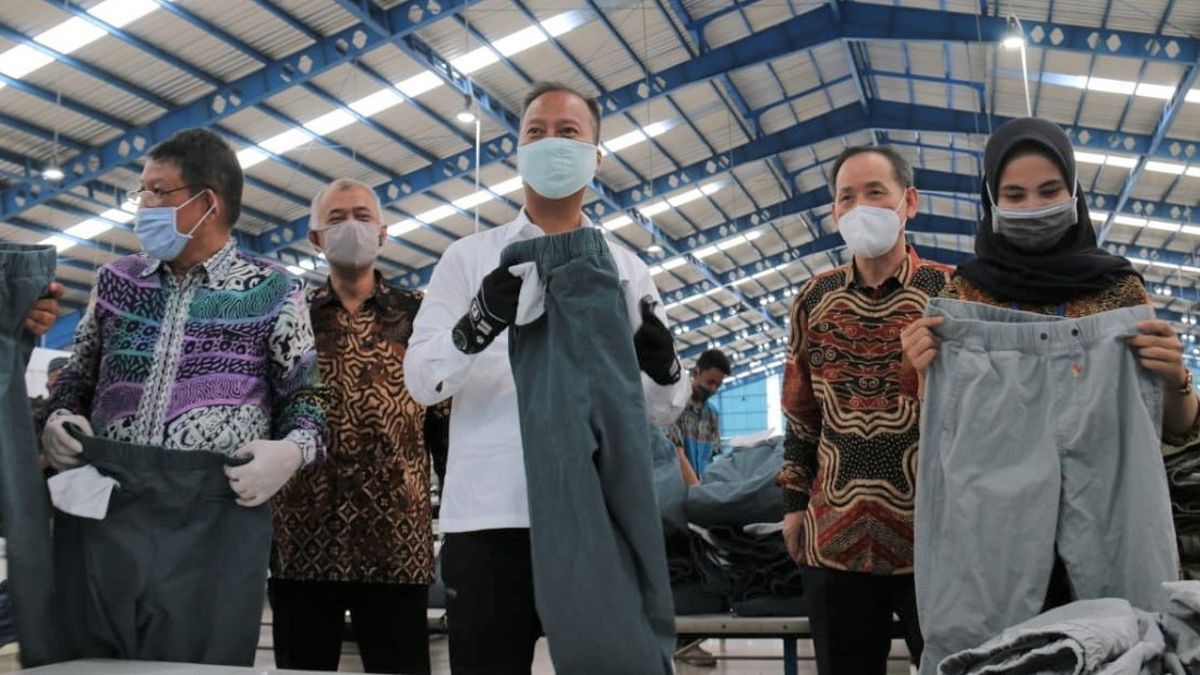JAKARTA - The Ministry of Industry encourages the batik and craft industry to take advantage of modern technology in order to boost productivity and quality more efficiently. This is also in line with the implementation of priority programs on the Making Indonesia 4.0 road map.
The Head of the Industrial Research and Development Agency (BPPI) of the Ministry of Industry, Doddy Rahadi, believes that the production process is innovative, effective and efficient, making industry players always carry out continuous creation, so that their productivity will increase and ultimately their competitiveness will also be boosted.
According to the Head of BPPI, the rapid development of technology recently, especially the 4.0 industrial revolution, has brought extraordinary changes to the business sector.
Furthermore, Doddy said, it cannot be denied that every technological development always promises convenience, efficiency, and increased productivity. The types of work that previously required considerable physical abilities are now relatively able to be replaced by automatic machines and modern technology.
"Technology has touched various fields and succeeded in changing human behavior, including in addressing the manufacture of products such as handicrafts and batik," he said, in Jakarta, Sunday, October 11.
Even so, Doddy said, the presence and role of technology is unlikely to replace the role of humans as a whole. Therefore, he said, the touch of technology would not fade, disappear, or replace any of the cultural values contained in handicraft and batik products.
"If the technology used can synergize with local culture, the application of this technology will have a very positive impact. Of course, industrial performance will increase and local culture will be maintained," he said.
The wisdom of combining technological advances in the industrial era 4.0 with the sustainability of the nation's culture is expected to provide added value to national handicrafts and batik products which are based on women's skills (craftmanship).
"All of this has the aim that the handicraft and batik industry which is based on local culture will continue to prosper in its own country, not timeless by the changing times," he said.
On the other hand, all of these efforts will not ignore environmental issues. In this case, said Doddy, the handicraft and batik industry sector should use environmentally friendly materials, such as materials derived from renewable natural sources.
"In order to achieve these goals, some time ago, the Yogyakarta Center for Handicrafts and Batik (BBKB) as a work unit under the guidance of BPPI, has organized the Second National Seminar on Handicraft and Batik Industry (SNIKB) in 2020 with the theme Role of Technology 4.0 in Batik and Craft Industry Development, "he explained.
Modern Technology Contributes to the National Economic HoistDoddy believes, through the use of the latest technology, the batik and craft industry will be able to make a significant contribution to the national economic recovery due to the impact of the COVID-19 pandemic.
"The handicraft and batik industries must also be able to adapt to new habits or changes due to the impact of the pandemic," he explained.
For that, said Doddy, creative and innovative thinking through the use of technology and optimization of existing resources can increase productivity and contribute positively to the national economy.
Moreover, the batik industry is one of the sectors that creates quite a lot of jobs. This sector, which is dominated by small and medium industries (IKM), is spread across 101 centers throughout Indonesia.
"The batik industry is given priority development apart from being based on local culture, it is also considered to have great leverage in creating added value, the impact of trade transactions, the amount of investment, the impact on other industries, and the speed of market penetration," he explained.
According to Doddy, batik products played a significant role in earning foreign exchange through the achievement of export value in 2019 of 17.99 million US dollars. Meanwhile, from January to July 2020, the shipping value of batik has increased by reaching US $ 21.54 million. Its main export market destinations are Japan, the United States and Europe.
Meanwhile, for the handicraft industry, the number is more than 700 thousand business units and absorbs 1.32 million people. In 2019, the export value of national handicraft products penetrated up to US $ 892 million, an increase of 2.6 percent compared to 2018's acquisition of US $ 870 million.
On the same occasion, the Head of the Yogyakarta Center for Handicrafts and Batik (BBKB), Titik Purwati Widowati said that her party is determined to encourage the creation of new ideas and innovations in the development of the batik and craft industry in the country.
"We hope that the use of modern technology will eventually develop into a competitive product in the global arena as well as support industrial processes from upstream to downstream," he said.
To address the various challenges and dynamics in the era of the Industrial Revolution 4.0, according to Titik, collaborative steps need to be taken by involving several stakeholders, ranging from government institutions, associations and industry players, to academics and the media.
"We actively publish various research and development results related to the handicraft and batik industry through seminar programs or others," he said.
The English, Chinese, Japanese, Arabic, and French versions are automatically generated by the AI. So there may still be inaccuracies in translating, please always see Indonesian as our main language. (system supported by DigitalSiber.id)













